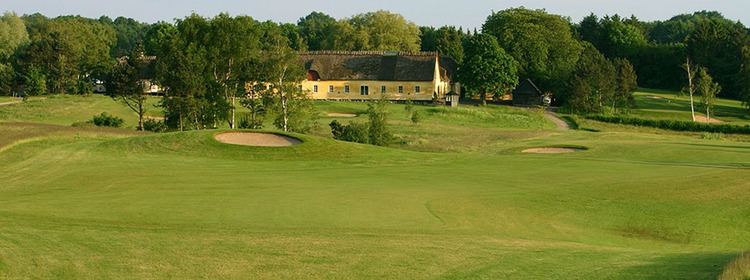Time zone CET (UTC+1) Area 31.28 km² Local time Saturday 3:59 PM | Region Capital (Hovedstaden) Current municipality 2007-01-01 Postal code 2970 Elevation 32 m | |
 | ||
Weather 5°C, Wind NW at 29 km/h, 71% Humidity | ||
Hørsholm is an affluent city on the Øresund coast approximately 25 km (15.53 mi) north of Copenhagen, Denmark. It covers most of Hørsholm Municipality and straddles the borders neighbouring Fredensborg-Humlebæk and Rudersdal Municipalities.
Contents
- Map of 2970 HC3B8rsholm Denmark
- Palace and market town
- Industrialization
- 20th century growth
- Nature parks and open spaces
- Culture and attractions
- Economy
- Transport
- References
Map of 2970 H%C3%B8rsholm, Denmark
Hørsholm proper is developed around Hirschholm Palace which were constructed in the 1730s but the town has later absorbed several of the nearby communities that are of much older origins.
Palace and market town
Hørsholm was founded in connection with the construction of Hirschholm Palace. Niels Eigtved created a plan for a residence town in 1737 and to stimulate its growth, it was given status as market town in 1739. However, it never came to serve as a market town and was still only a small settlement when the palace was demolished between 1810 and 1816. Over the following decades it grew as a garrison town and a local centre for trade.
Industrialization
A textile factory, later known as the Royal Military Textile Factory, had already been established in Usserød in the 1790s(closed 1981). It was joined by other industrial enterprises in the second half of the 19th century, such as Hørsholm Textile Factory (1885-1975), Hørsholm Tobakspakkeri og Hørsholm Iron Foundry (1900-1965).
20th century growth
In the 20th, Hørsholm gradually grew together with the neighbouring communities Usserød, Rungsted and Smidstrup. Most recently, Hørsholm has grown together with Kokkedal in Fredensborg-Humlebæk Municipality and Trørød, Vedbæk and Gammel Holte in Rudersdal Municipality.
Nature, parks and open spaces
Hørsholm Slotshave, the former gardens of Hirschholm Palace, is the largest public park in Hørsholm. A little to the east of it lies Hørsholm Arboretum, part of the University of Copenhagen Faculty of Science. Hørsholm Cemetery is Hørsholm's largest cemetery. Rungsted Beach is Hørsholm's most popular beach but bathing is also possible at Mikkelborg and from several other localities along the coast.
Hørsholm is surrounded by a number of small woodlands. They include Rungsted Hegn–Folehave Skov. Kokkedal Skov, Elleskoven and Stasevang Skov. The larger Jægersborg Hegn, which separates Hørsholm from Skodsborg to the south, adjoins the extensive UNESCO-LISTED deer park Jægersborg Dyrehave.
Culture and attractions
Trommen ("The Drum") is Hørsholm's principal cultural centre and also home to its main library. Hørsholm is home to several museums. Rungstedlund is the former home of the author Karen Blixen and is now home to the Karen Blixen Museum. The Danish Museum of Hunting and Forestry is based in the few surviving buildings from Girschholm Palace. Hørsholm is only about 17 km (11 mi) from Jægersborg Dyrehave and Store Dyrehave and some 30 km (19 mi) from Gribskov, all three included in the recently UNESCO-listed Par force hunting landscape in North Zealand developed by King Christian V in the late 17th century for hunting deer with hounds. The adjacent Hørsholm Local History Museum contains a Struense exhibition. Gammel Holtegård plays host to temporary art axhibitions as well as a permanent archeological exhibition. The small Fuglsangshus is also used as a venue for changing art exhibitions.
Economy
Hørsholm is linked to engineering consultancy and information technology. Scion DTU, a since park now part of the Technical University of Denmark, is home to many technological start-ups.
Hørsholm Hospital used to be a major employer but it has now closed.
Transport
The Hørsholm Highway is Denmark's oldest highway and connects Hørsholm to Copenhagen to the south and Helsingør to the north.
